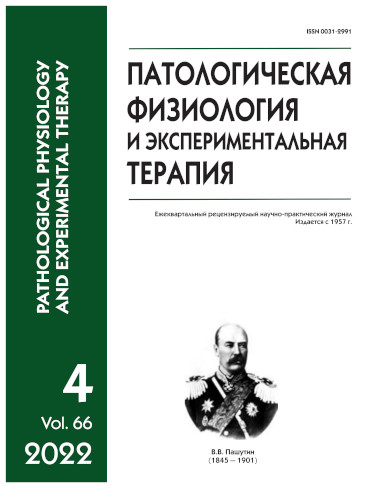Effect of a chitosan composite with aspartic acid on the change in reactions of the hemostasis system in experimental hypocoagulation
Abstract
Background. Hemorrhagic conditions caused by impaired reactions of vascular-platelet and /or plasma hemostasis in bacterial infections, inflammation and injuries of various origin are a serious challenge to physiology and medicine. It seems promising to use chitosan-based biopolymers with a high hemostatic activity. The aim of the study was to investigate the effect of a chitosan composite with aspartic acid and its components on the anticlotting potential of blood plasma from animals with experimental hypocoagulation. Methods. The study was performed on 48 male Wistar rats divided into 5 groups. The chitosan (100 mg/kg) composite with aspartic acid (2 mg/kg), its components at doses equivalent to their content in the composite, or a saline (control) were administered orally to rats daily once a day daily for 14 days. To simulate experimental hypocoagulation, 10 min after the drug administration, animals of groups 1-4 received acetylsalicylic acid (1.5 mg/kg, orally). Group 5 consisted of intact rats. ADP-stimulated platelet aggregation, plasma hemostasis parameters (APTT, prothrombin time, thrombin time, fibrinogen content, coagulation factor FXIIIa activity) and fibrinolytic activity (total, enzymatic, and fibrin-depolymerization) were evaluated in the blood plasma 20 hours after completion of the course of drug administration. Results. The chitosan composite with aspartic acid contributed to the increase in the blood hemostatic potential evident as a decrease in all types of plasma fibrinolytic activity, acceleration of clotting (according to APTT and prothrombin time), increased factor FXIIIa activity and fibrinogen content, as well as increased platelet aggregation. Chitosan alone also facilitated blood clotting, although to a lesser extent than the composite, while aspartic acid influenced only enzymatic fibrinolysis and platelet aggregation. Conclusion. The study showed a high efficacy of the chitosan composite with aspartic acid for normalizing vascular-platelet and plasma hemostasis in hypocoagulation conditions.






